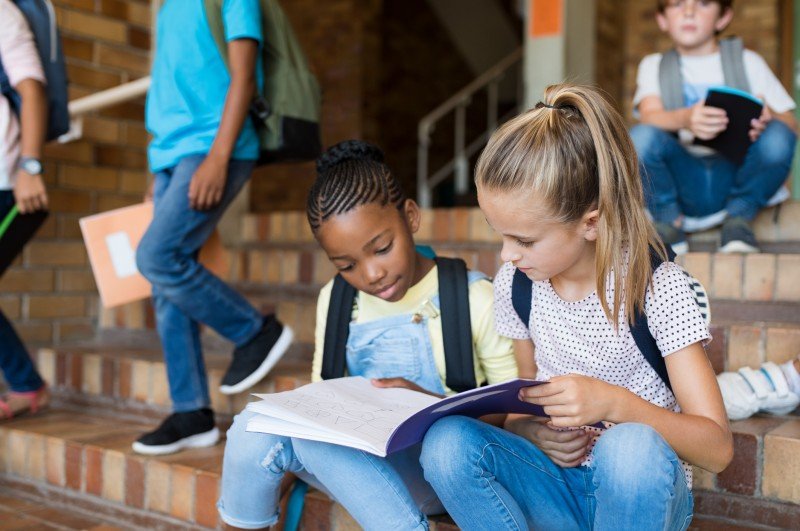Our children have had some rough years of learning due to the pandemic and now it’s time to re-focus on classroom interactions. Some younger children haven’t had time to experience the way a classroom normally works. How do they behave in a large group? What if they need help? What if they make a mistake? How responsive will the teacher be to individual needs? Parents can help children take optimal advantage of their learning environment by teaching some basic learning skills. Your child doesn’t have to be top of the class to enjoy learning in a classroom.
Here are some tips to help your child be a proactive, happy learner:
Be Prepared to Learn
Teachers notice when children come to school prepared to learn. They have the needed supplies/papers or homework to return, have eaten breakfast and had enough sleep.
Yes, it’s a lot of work for parents to keep up with all the activities at school. And at some point, children need to take responsibility for those things themselves, but not yet. Elementary school children need guidance from you as they learn how to manage responsibilities. Be the parent who knows what is going on at school and provides support for your child.
Knowing When to Listen Carefully
The best student in the world can’t be on high-listening alert all day long. But successful students know when to listen carefully. That is one of the most important skills a student can learn. You can explain to your child that it’s vital to listen carefully when a teacher is giving directions before independent work times. These times usually come when the entire class is gathered, and a new subject is introduced. Just before the children move to work independently, the explicit directions are given. Good teachers usually leave written directions where students can refer to them as they work.
Practice listening skills with your children. When are the times you need them to listen and remember? Help them see the difference between casual listening and focused listening, when they need to act on the directions given.
Knowing How to Follow Directions
It may seem easy to adults, but children often don’t know how to follow directions. Most directions are sequential: “Get your paper, write your name at the top, then do problems one through 10.” For some children, all the words get jumbled up, and they fail to do the first thing correctly. You can practice following directions at home and teach coping skills if the child forgets. Listening and following directions are key skills in learning.
Play a game in which you give two directions: “Go to the door and tap on it three times, then stand by the coffee table.” When the child can do two directions correctly, try for three. Keep adding until a mistake is made. Children can become quite adept at following directions using this method. If you notice consistent difficulties in following directions, it may be useful to talk to your child’s teacher, a pediatrician, school counselor or therapist for an evaluation.
Knowing How to Ask Questions
Here is a typical conversation in a first-grade classroom: Teacher: “Does anyone have any questions before we start our work?” Student: “My hamster had babies last night.”
This little interchange may bring smiles to adults’ faces, but it highlights the fact that many children don’t know the difference between statements and questions. And they don’t understand the difference between appropriate questions and those that are off-task. Asking questions at the appropriate time and about the topic at hand is absolutely one of the most important skills a learner can master. It’s good to ask questions when we need information or clarification. It’s smart to ask good questions.
Practice asking clear, concise questions. “I understand how to write complete sentences using these words, but I don’t understand how you want me to change the action words.” Vague questions like “How do I do this?” or statements like “I don’t get it” leave the teacher wondering where to begin. Say to your child, “What, exactly, do you need?” to help them learn to be specific when asking questions.
Social Skills: Kindness and Being Aware of Others’ Needs
Some children seem more adept at building relationships and maintaining friendships than others. This is the child who notices when a friend is sad or needs to borrow a pencil. This is the child who shares with others and takes turns, the child who plays fair or notices when a friend needs encouragement.
Don’t underestimate the value of social skills when it comes to success in the classroom. Your child may not solve every math problem correctly, but if the child is a good friend and a kind, caring person, you’ve got a lot to be proud of, and the classroom is enriched. Help your child notice when others seem sad. Guide them to ways to help or share or show they care.
Practice: “Did you notice that Katie seemed sad today? I wonder if we could do something to cheer her up?” or “I like the way you shared your Legos with your friends. Being a good friend is really important in our family.”
Success in the classroom is more than achieving high marks on assignments. As in all of life, being a responsible, kind and caring person is just as important as being the best at what we do. Give your kids a boost by teaching them to master good classroom skills and watch them soar.
Jan Pierce, M.Ed., is a retired teacher and the author of Homegrown Readers and Homegrown Family Fun. Find Jan at www.janpierce.net

